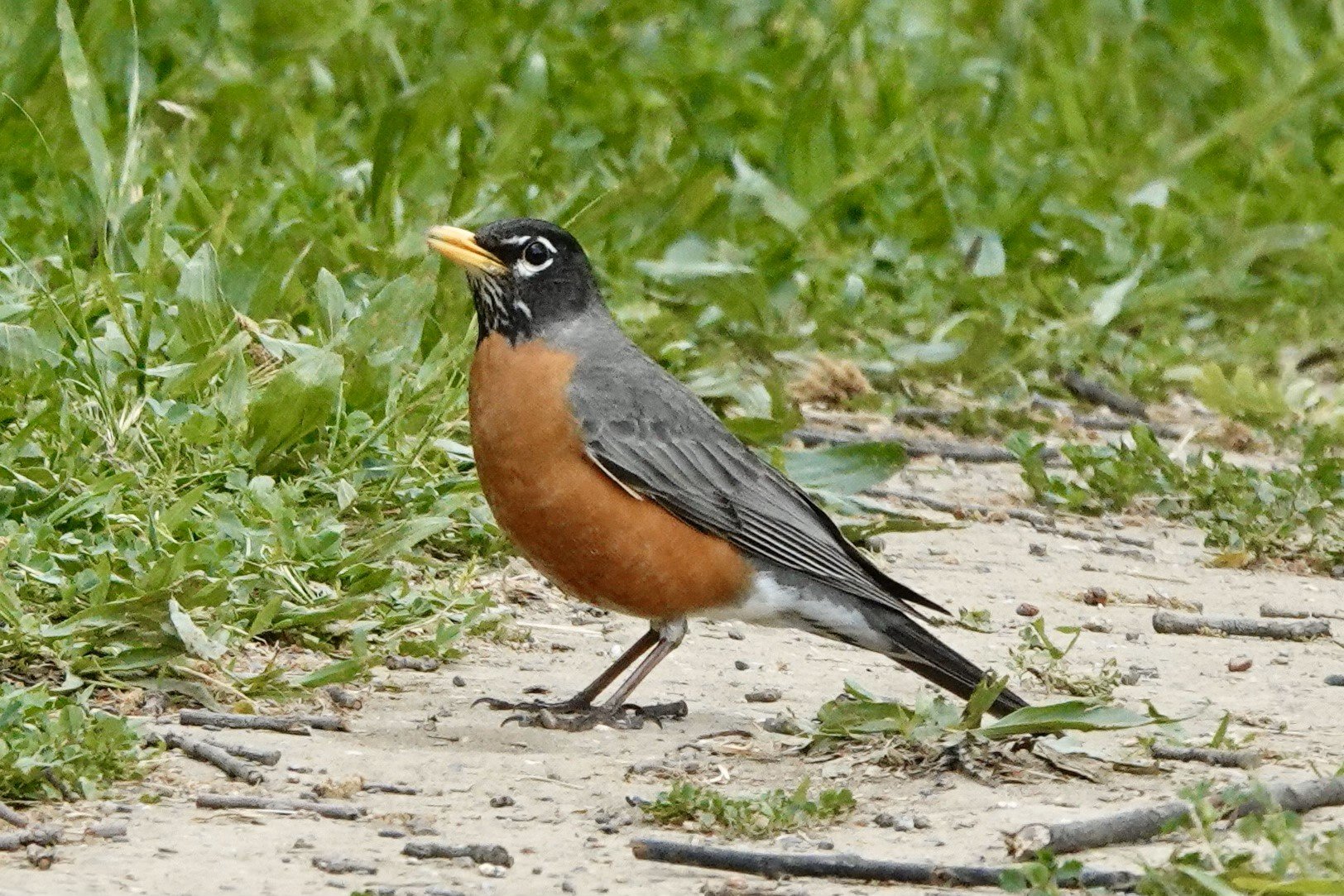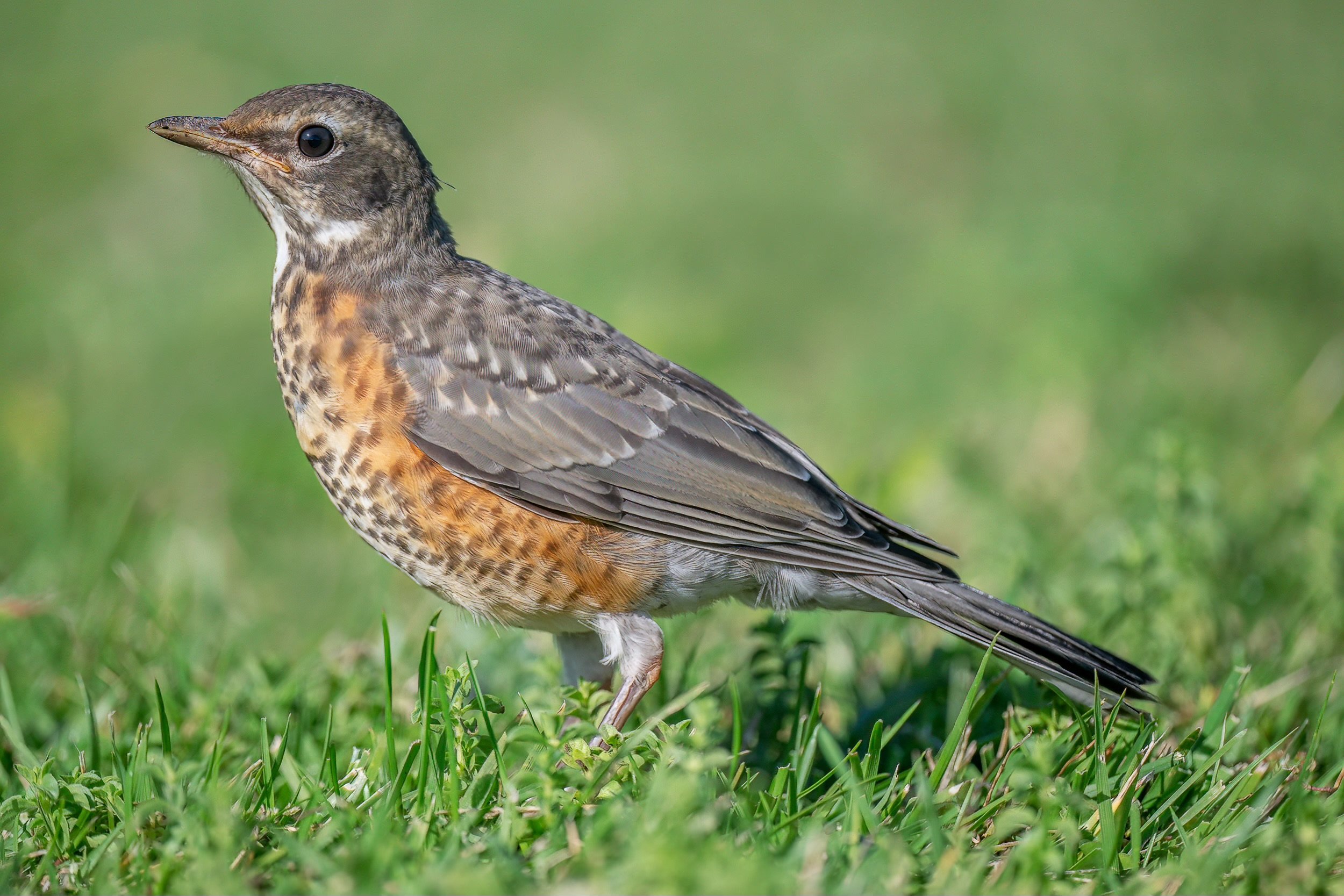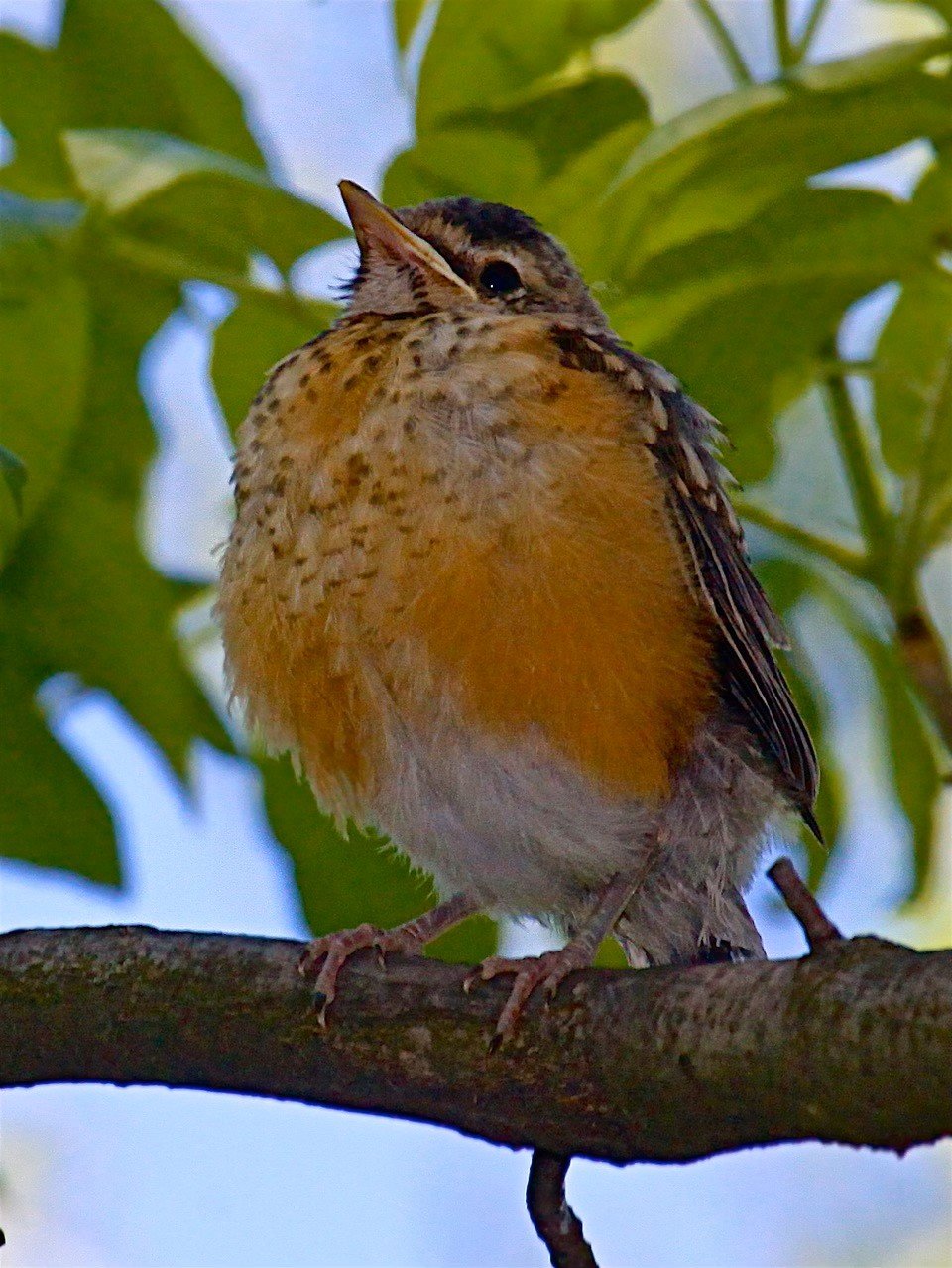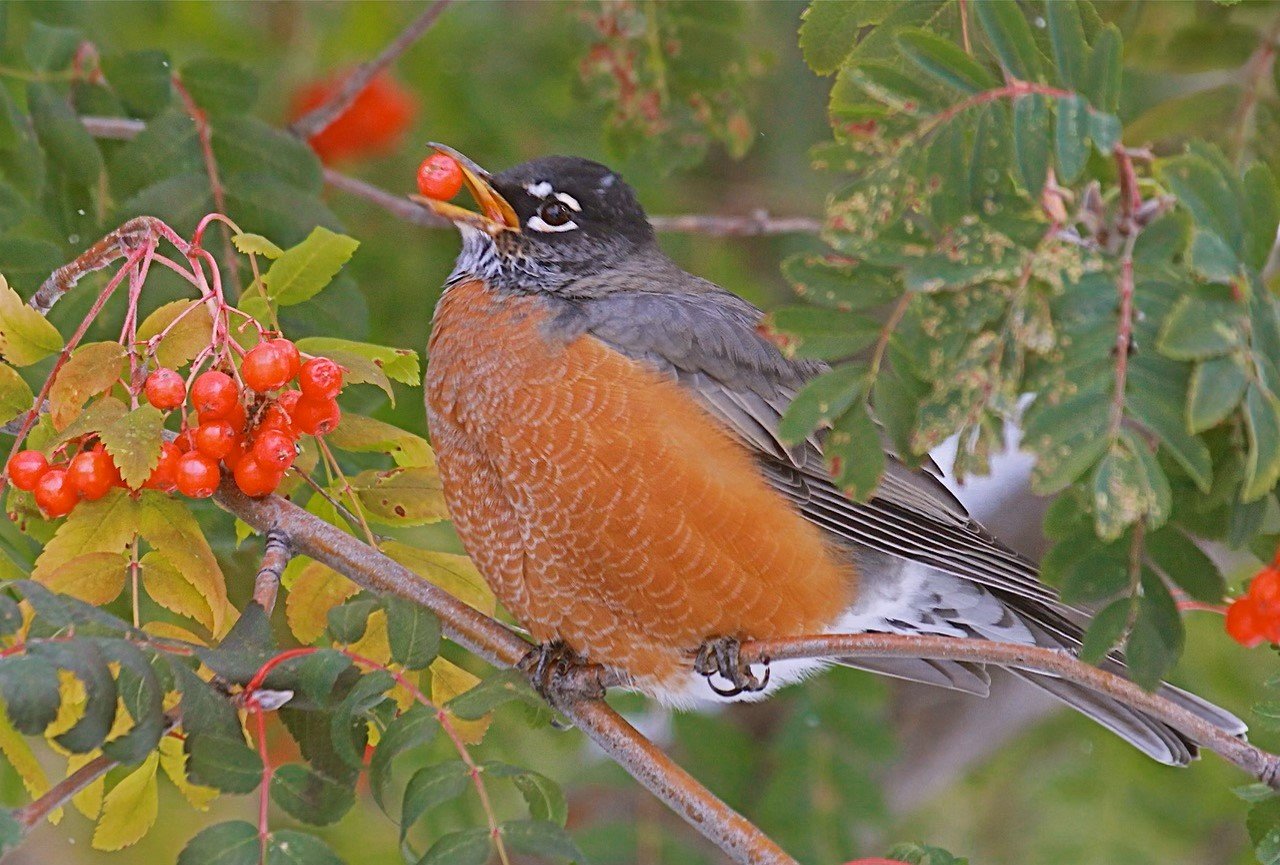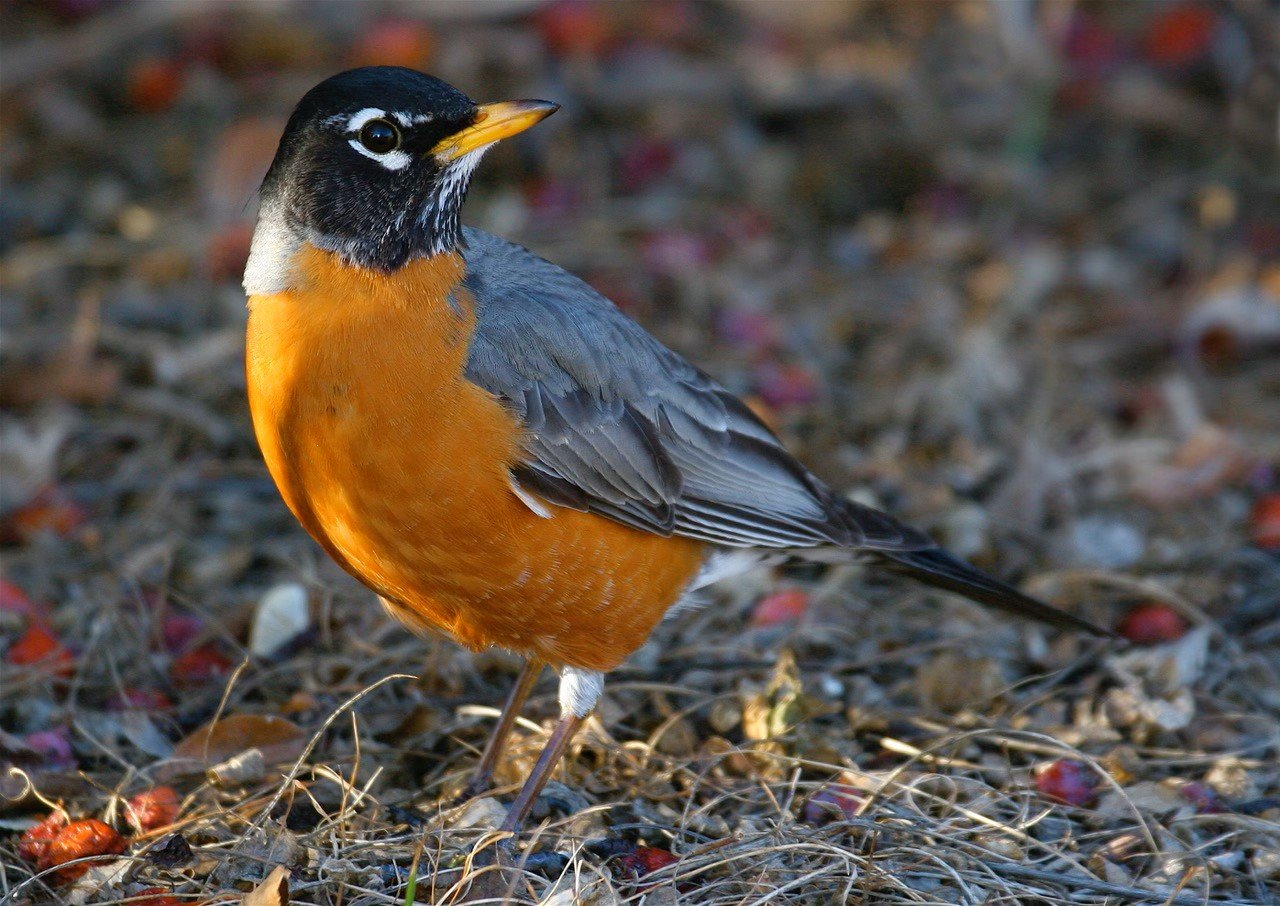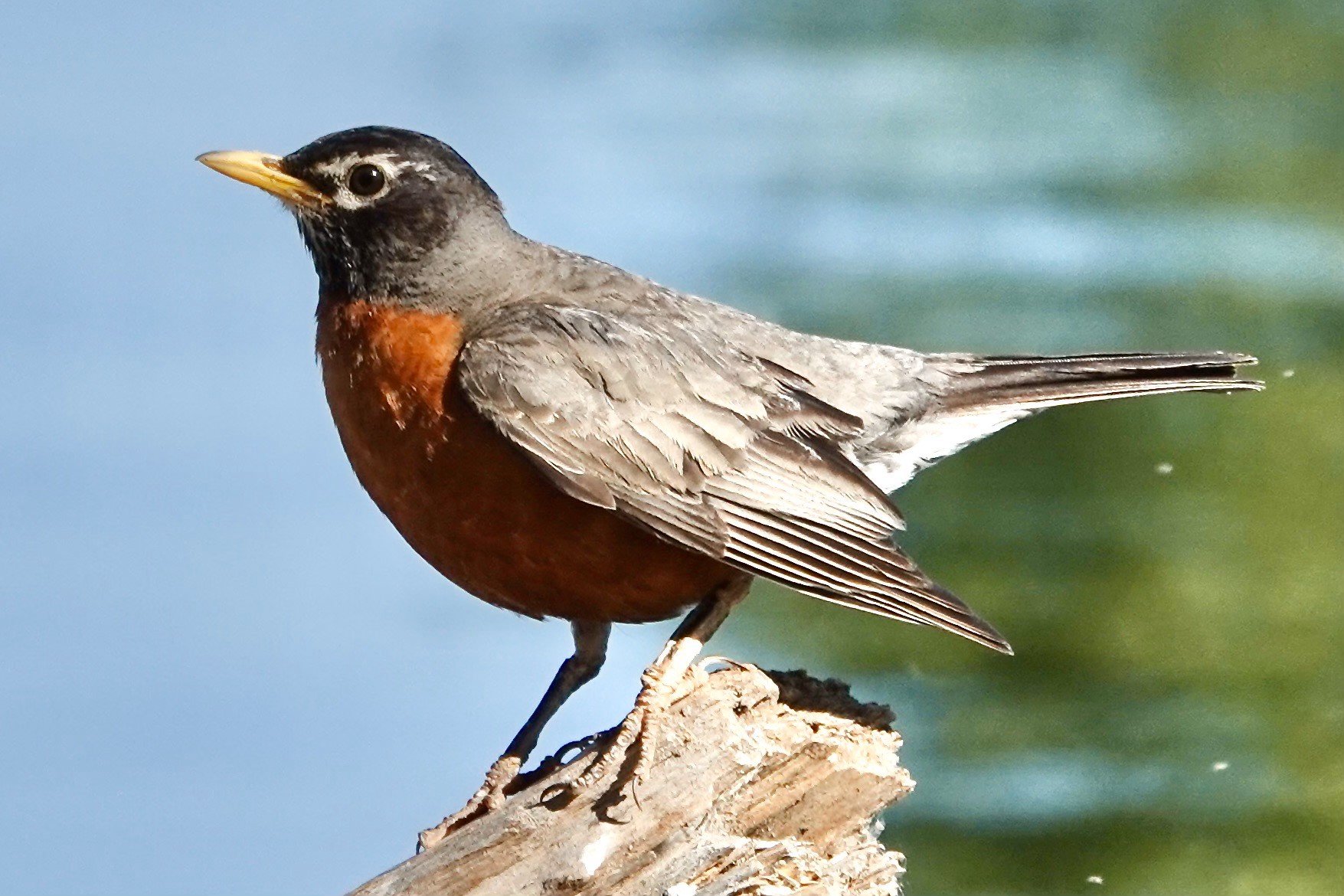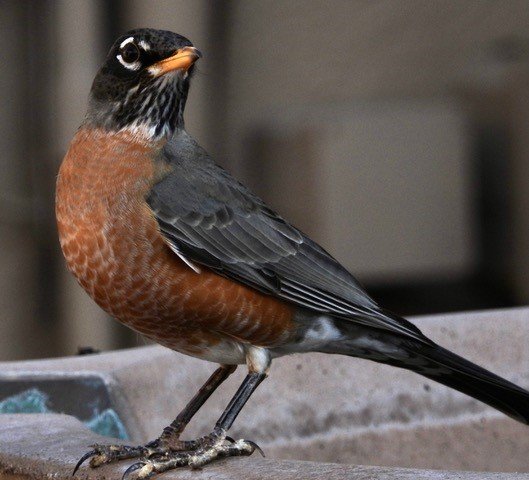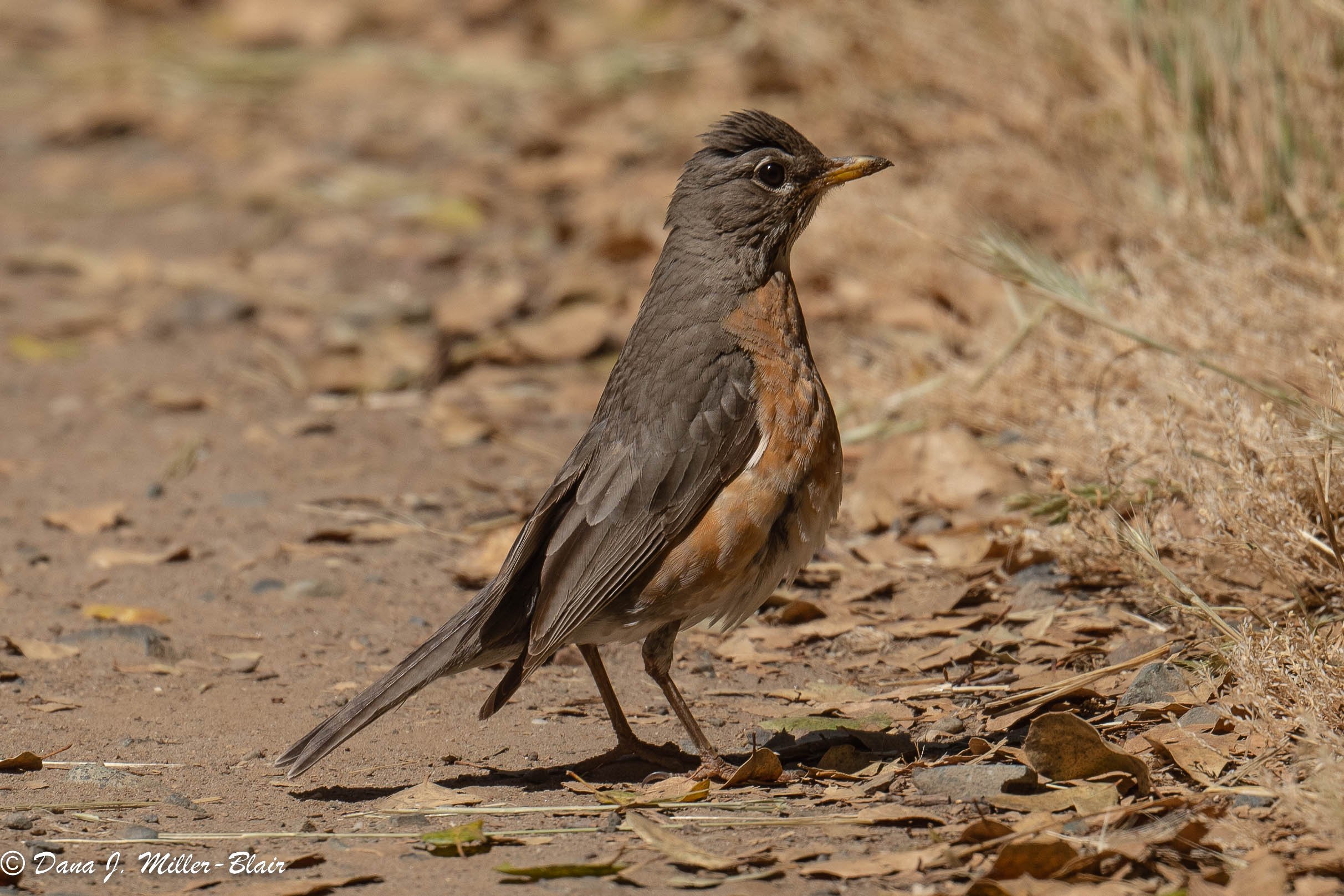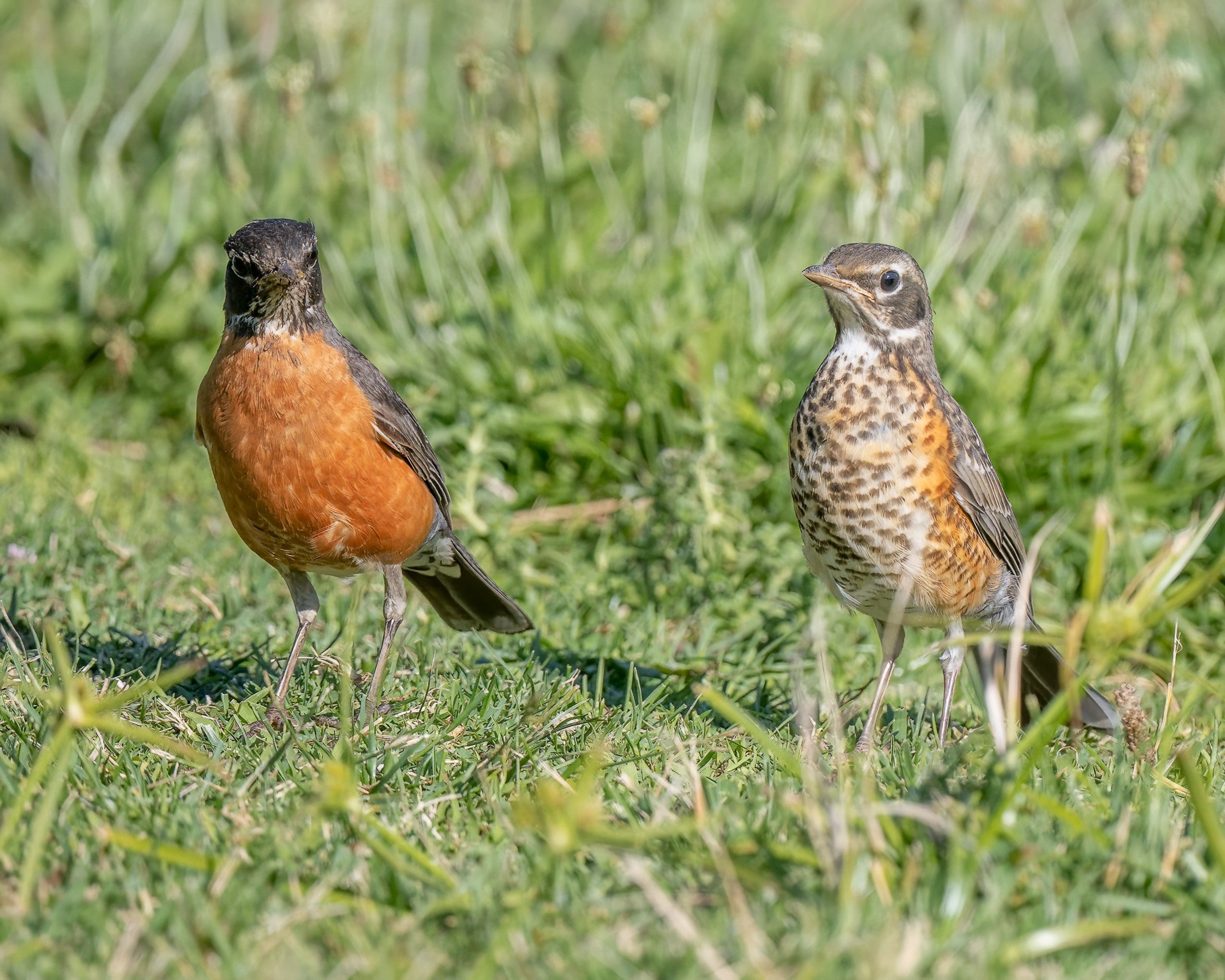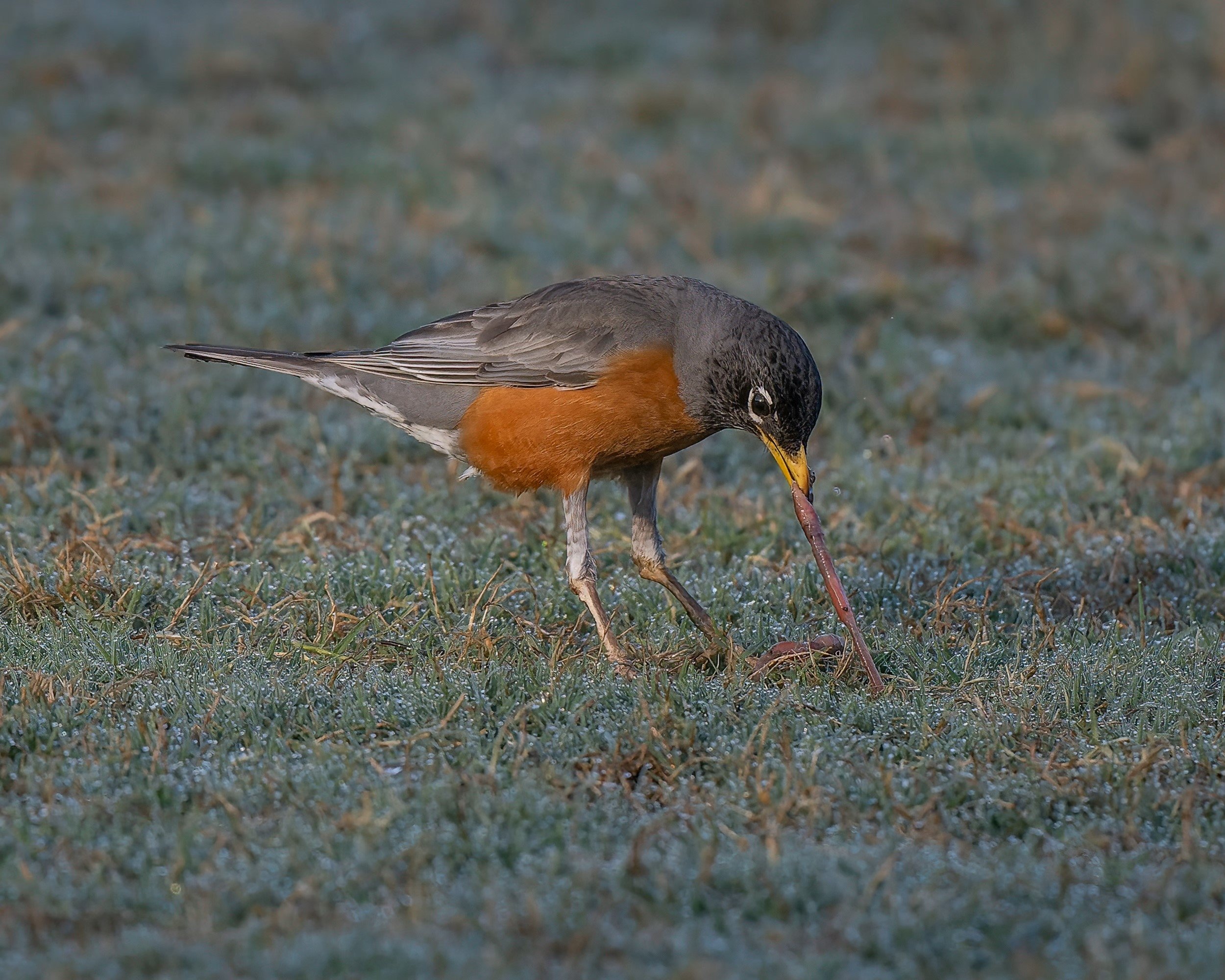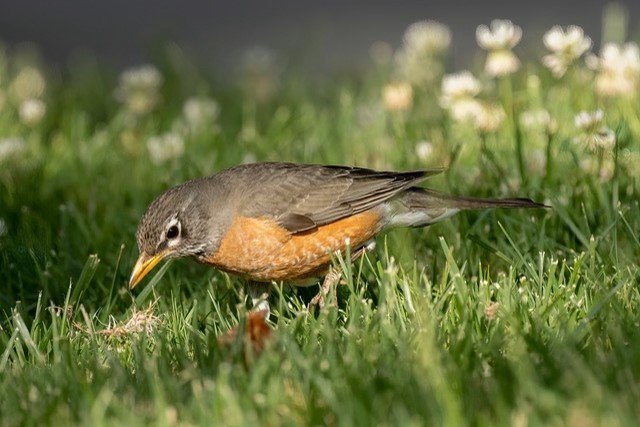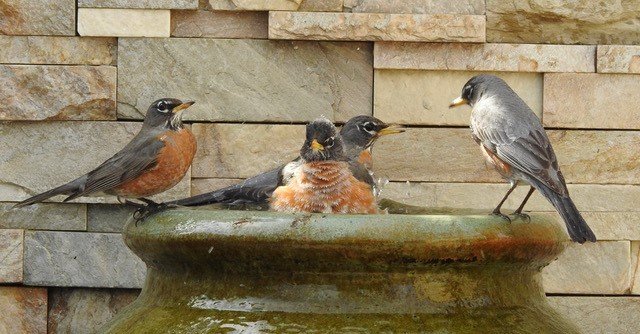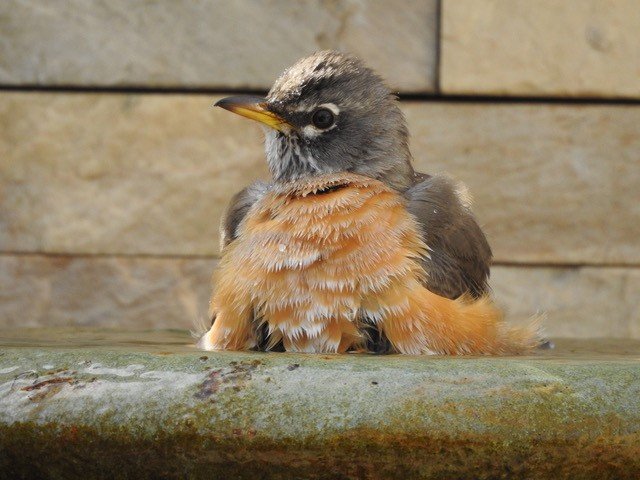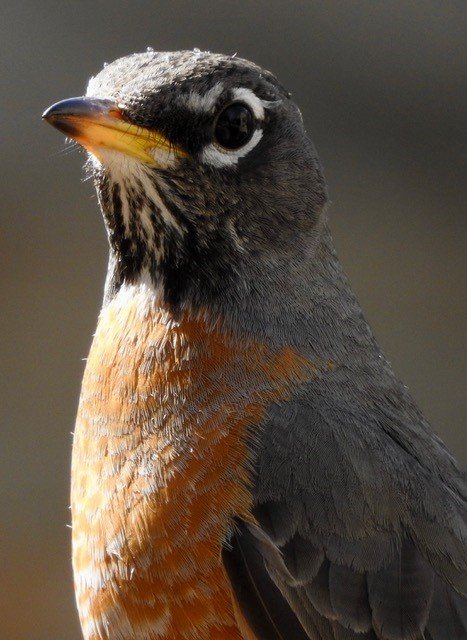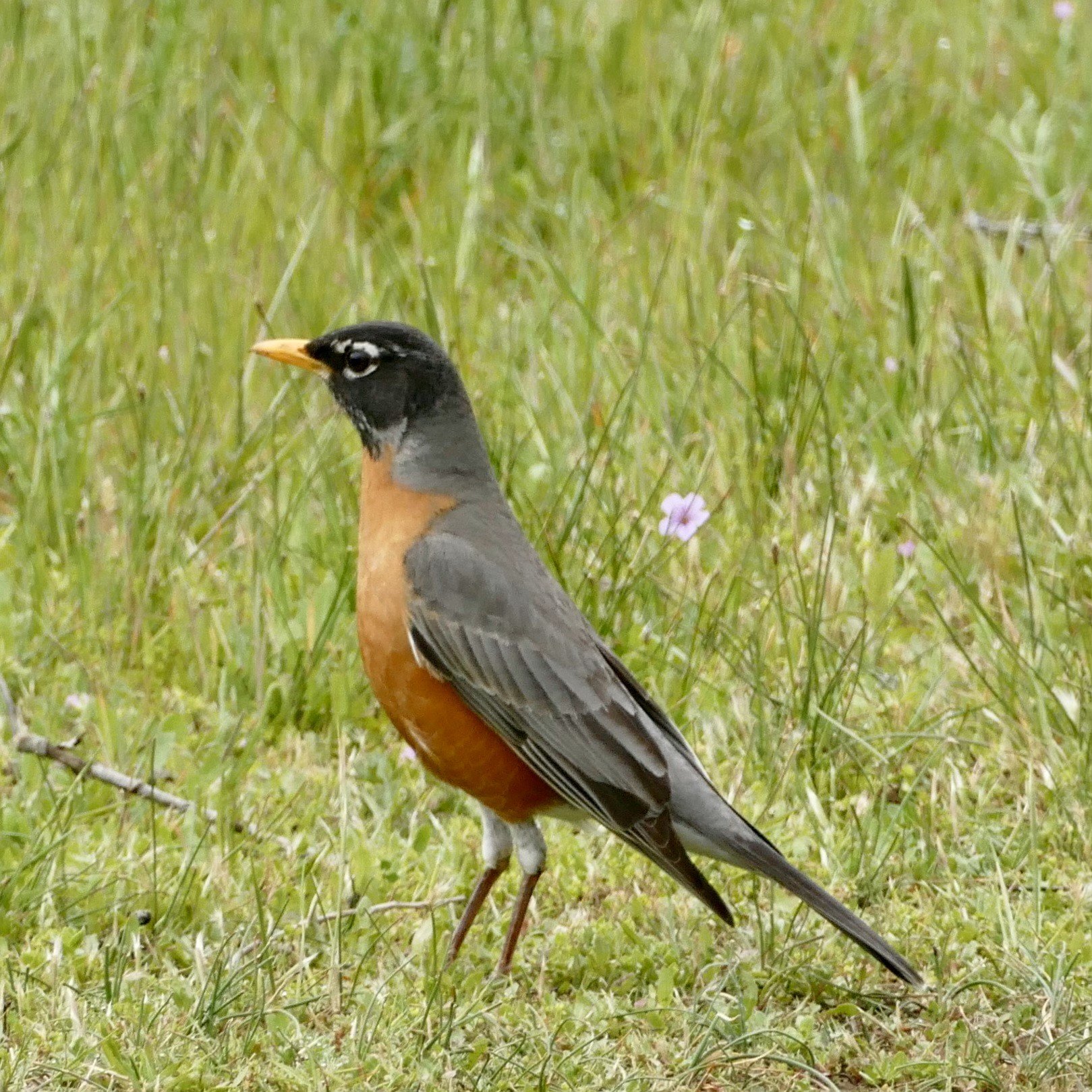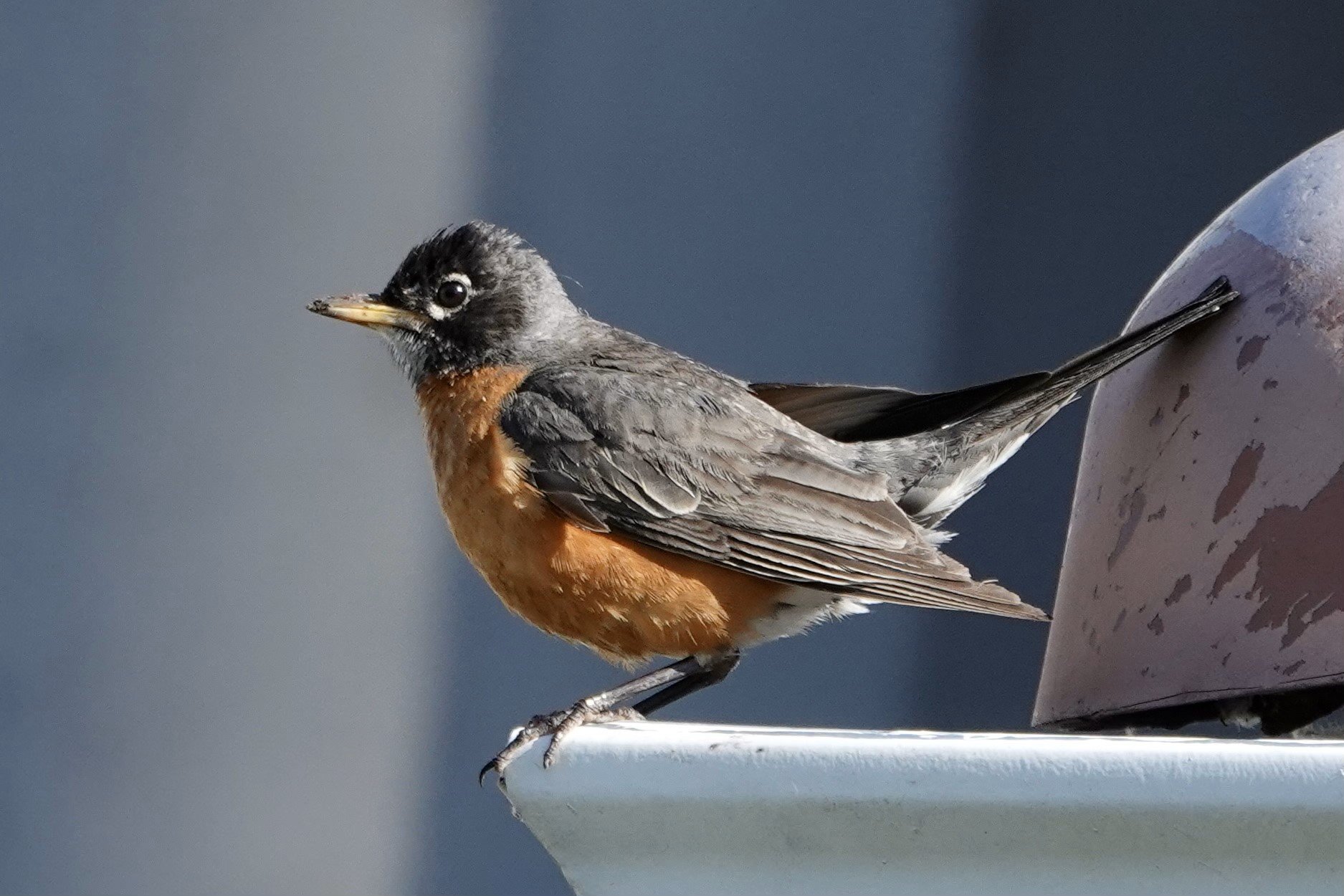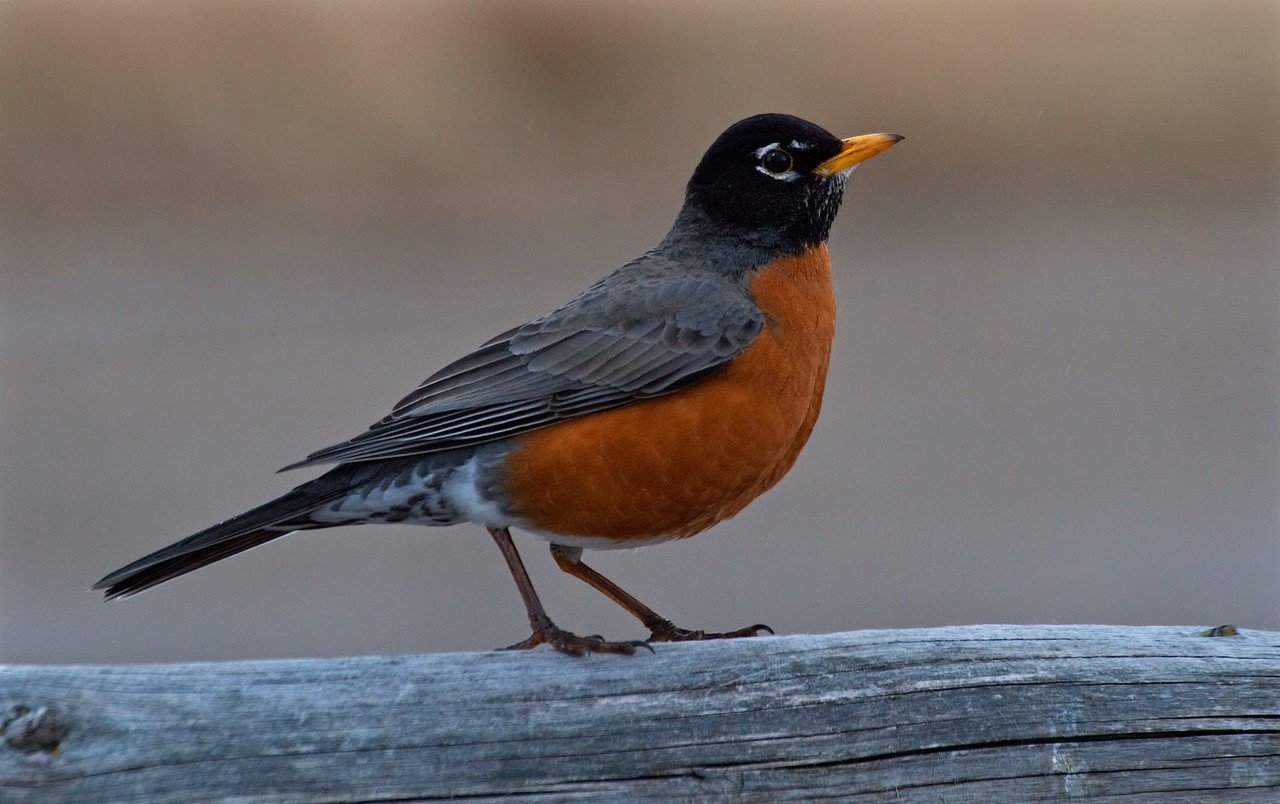American Robin, adult male, Image by Larry Hickey
This month, let’s learn about a familiar and very admired songbird called the American Robin (Turdus migratorius). American Robins are in the thrush family and are fairly widespread throughout the United States, Canada, Mexico, and Guatemala. Some populations are migratory while others remain in the same area year-round. Migration is necessary for some nesting populations where food sources are not as plentiful in the winter. The Sacramento area has a population of American Robins that stay here year-round. These birds remain because they are able to find ample food year-round. Transient (or short-term) populations of American Robins pass through the Sacramento area during migration. Therefore, because migrating flocks stop for a brief visit, you may occasionally notice a greater number of these beautiful birds in your yard than usual!
What do American Robins look like?
American Robin, adult female, Image by Daniel Lee Brown
American Robins are eye-catching birds that are approximately 8-11 inches long. They have gray-brown backs and wings, dark heads and tails, yellow beaks, black and white streaked throats, long legs, and deep rust or reddish-orange chests. There is white on their lower abdomens, upper under-tail areas, and their eyes are outlined with a white, broken eye ring. Female and immature birds look similar to males; but their colors are usually less pronounced. During flight, an orange under-wing area is visible; but their very noticeable white undertail area is often a helpful identification tool. Juveniles have chests that are heavily spotted with brown, their backs are mottled gray, and orange or light rust color on their sides. Orange may be faintly present on their abdomens and chests as well.
American Robin, adult male, Image by Susan Goodrich
American Robin, immature, Image by Daniel Lee Brown
Where do American Robins live?
American Robins are found in many habitats. They were at one time a species specific to forests; but have adapted to living in manicured landscapes near humans. American Robins can be found on lawns around homes in cities or towns, on golf courses, in parks, in farmlands, in open grassy areas with shrubs, in the Alaskan tundra, and also in dense woodlands. For some populations, spring migration is a necessity because they need a nesting habitat that has both trees and ample soil moisture. American Robins need moist soil where they can find earthworms to eat and have mud available for building their nests. One report noted that American Robins will probably be seen less around homes as more lawn-free, drought-tolerant landscapes are created.
American Robins, Image by Paul Miller
Nesting pairs are very protective of their nesting area and become agitated when other birds come near. Their nests are usually constructed in trees or shrubs. American Robins are not cavity nesters but will sometimes build nests on (or inside) man-made structures such as gutters, eaves, ledges, barns, bridges, etc. In western prairies, American Robins may nest close to the ground. In Alaska, they may nest in cliff sides.
American Robin, fledgling, Image by Ed Harper
Female American Robins choose nest sites and also construct the nests. They use their wings to press the materials into a cup-shaped nest. Dead grass, paper, feathers, rootlets, moss, and twigs are some of the materials used to make nests. After the nest structure is formed, the female will smear on mud which acts to strengthen it. A fine dry grass is used to line the nest. Females lay three to five blue eggs in early spring and will usually lay eggs two times (or sometimes three times) per season. Both parents take part in feeding the young. Young birds are fed the parents’ regurgitated (partially digested) food, which is often earthworms and beetle larvae. Fledglings learn to be excellent flyers about two weeks after they fledge (leave the nest and begin to develop flight feathers). The time period that’s right after fledging, when young birds drop down from their nest and hide in low plants, can be dangerous until they learn to fly. Males will often care for the first fledglings while the female incubates (or sits on) her next clutch (group) of eggs. Males often lead their young to roost (to rest or sleep) in trees with other males doing the same. Females will join the flock after all the fledglings have learned to fly. In fall and winter, American Robins are often seen in roaming flocks that search for food and roost in trees. Therefore, in winter months they are more social birds, whereas in spring and summer, they pair off and become quite territorial.
What do American Robins eat?
American Robin, adult male, Image by Daniel Lee Brown
American Robins are often seen searching for food on the ground, especially in the spring and summer. They primarily eat earthworms when available and can be seen running, walking, or hopping on lawns to find them. Many perching birds that remain in trees most of the time simply hop from branch to branch. But hopping consumes more energy than running or walking. American Robins can do all three! Their strong legs help them pull worms out of the ground. They also eat insects (such as beetle grubs and caterpillars), berries, and other fruits. In some areas, it has been reported that American Robins will eat worms and insects in the morning and fruit in the afternoon. When insects become less plentiful in the fall and winter, American Robins gather in flocks in search of berries in wooded areas. Because they spend more time in trees in the wintertime, they are not seen as often as they are in the warmer months.
Researchers have found that American Robins have an “expandable” esophagus (the tubular area between the mouth and the stomach). This capability allows these birds to store food. The extra stored food may give robins more energy so that they can make it through cold nights.
American Robin, Image by Ed Harper
What do American Robins sound like?
The song of the American Robins has a beautiful melody having a series of slow whistling phrases. Their singing is heard before and after sunrise to attract mates or defend their territory. American Robins will also sing in the early evening. Their calls are used to communicate with each other. Their songs/calls have been described as a thrilled “whinny”, a “tup”, or a “cheerup cheerio cheerup” or a chuckling tuh-tuh-tuh-tuh sound. Listen to the American Robin now.
These songs and calls of the American Robin are from xeno-canto. More American Robin vocalizations can be found at xeno-canto.org/species/Turdus-migratorius.



